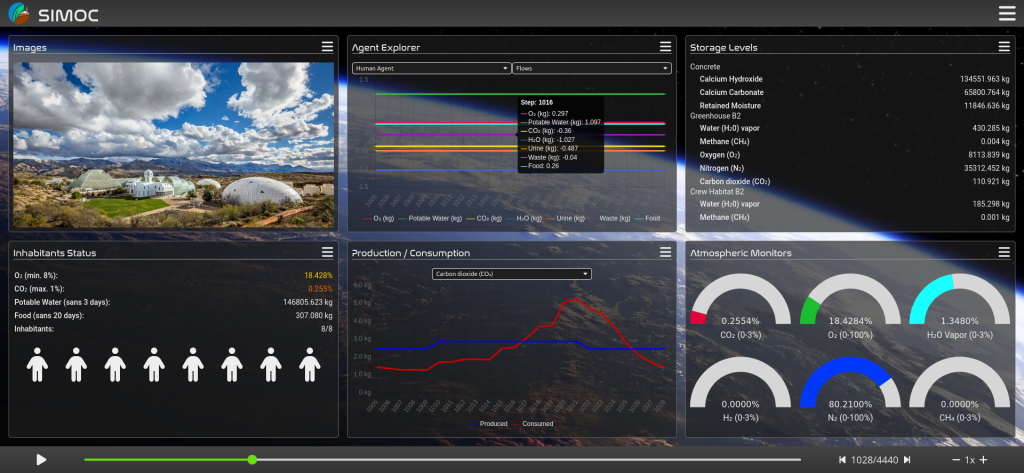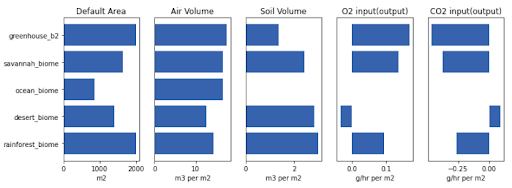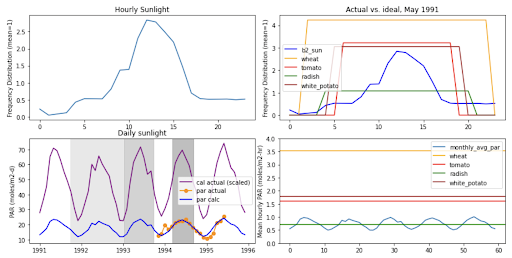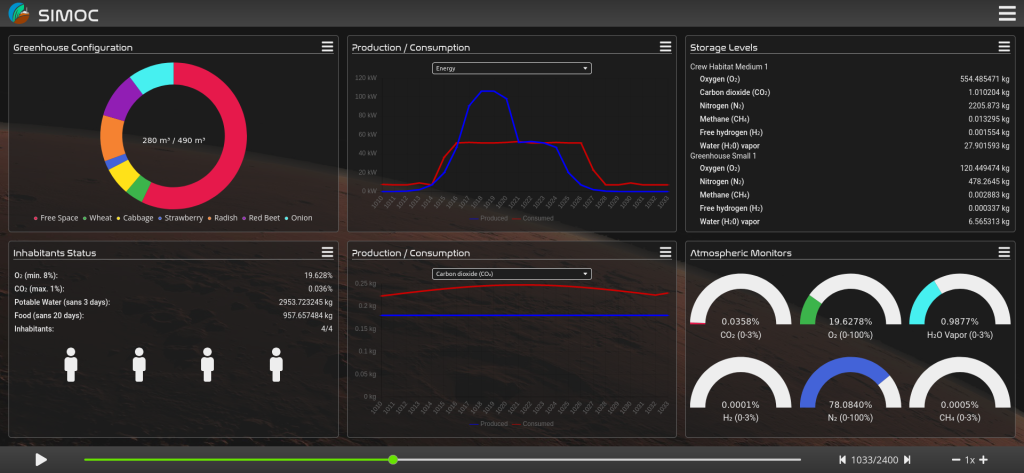SIMOC B2 is live!
In completion of a seven months development endeavor, a simulation of the original and second missions at Biosphere 2 are now incorporated into SIMOC and available for free from the National Geographic Society’s educational web portal.
The intent of SIMOC is to provide a model of Biological Life Support Systems for human space exploration. SIMOC was originally built around an ideal plant growth scenario (NASA CELSS growth chamber experiments and the NASA BVAD document), and was calibrated so that the simulation reproduced similar outcomes as given in published NASA experiments. The reality of a Moon or Mars habitat will be less than ideal, where the original Biosphere 2 missions are likely a closer approximation to how things might actually play out.
SIMOC B2 adds new degrees of freedom to the plant model (light response, planting density, crop management) as well as other new agents (concrete, biomes) such that the model reproduces experimental data from both NASA CELSS and the original Biosphere 2 missions with a single model. We attribute the large differences in plant productivity (up to 10x) and validate the system-level outputs against experimental B2 data.
By calibrating the model to these two extremes, we’re granting researchers, students and citizen scientists greater insight into the historical data from both and an opportunity to evaluate and compare a wider range of different BLSS scenarios with higher accuracy.






